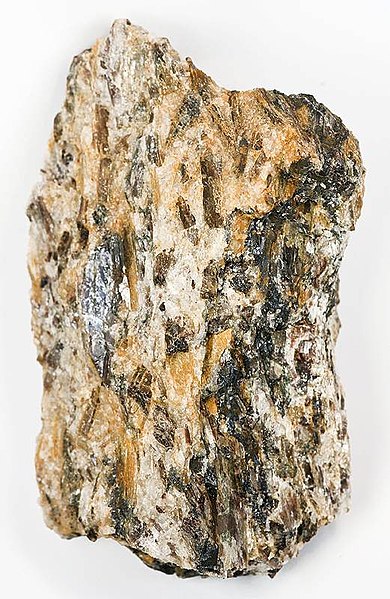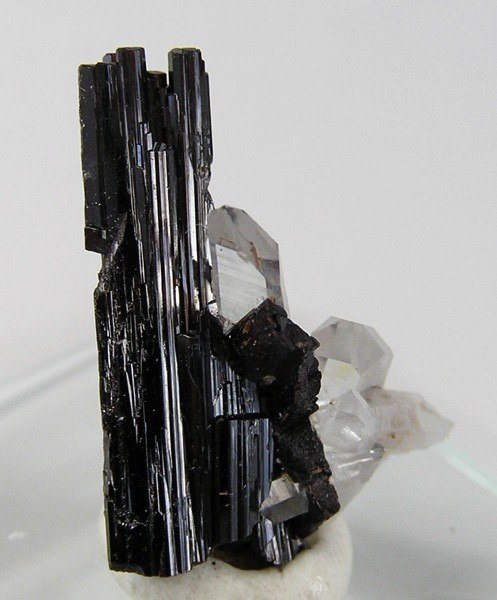The mineral pyrite ( PY-ryte), or iron pyrite, also known as fool's gold, is an iron sulfide with the chemical formula FeS2 (iron (II) disulfide). Pyrite is the most abundant sulfide mineral.
Intergrowth of lustrous, cubic crystals of pyrite, with some surfaces showing characteristic striations, from Huanzala mine, Ancash, Peru. Specimen size: 7.0 × 5.0 × 2.5 cm
Pyrite cubic crystals on marl from Navajún, La Rioja, Spain (size: 95 by 78 millimetres [3.7 by 3.1 in], 512 grams [18.1 oz]; main crystal: 31 millimetres [1.2 in] on edge)
Pyrite under normal and polarized light
An abandoned pyrite mine near Pernek in Slovakia
In geology and mineralogy, a mineral or mineral species is, broadly speaking, a solid substance with a fairly well-defined chemical composition and a specific crystal structure that occurs naturally in pure form.
Crystals of serandite, natrolite, analcime, and aegirine from Mont Saint-Hilaire, Quebec, Canada
Schist is a metamorphic rock characterized by an abundance of platy minerals. In this example, the rock has prominent sillimanite porphyroblasts as large as 3 cm (1.2 in).
Hübnerite, the manganese-rich end-member of the wolframite series, with minor quartz in the background
When minerals react, the products will sometimes assume the shape of the reagent; the product mineral is termed a pseudomorph of (or after) the reagent. Illustrated here is a pseudomorph of kaolinite after orthoclase. Here, the pseudomorph preserved the Carlsbad twinning common in orthoclase.


![Pyrite cubic crystals on marl from Navajún, La Rioja, Spain (size: 95 by 78 millimetres [3.7 by 3.1 in], 512 grams [18.1 oz]; main crystal: 31 millime](https://upload.wikimedia.org/wikipedia/commons/thumb/9/95/2780M-pyrite1.jpg/566px-2780M-pyrite1.jpg)





